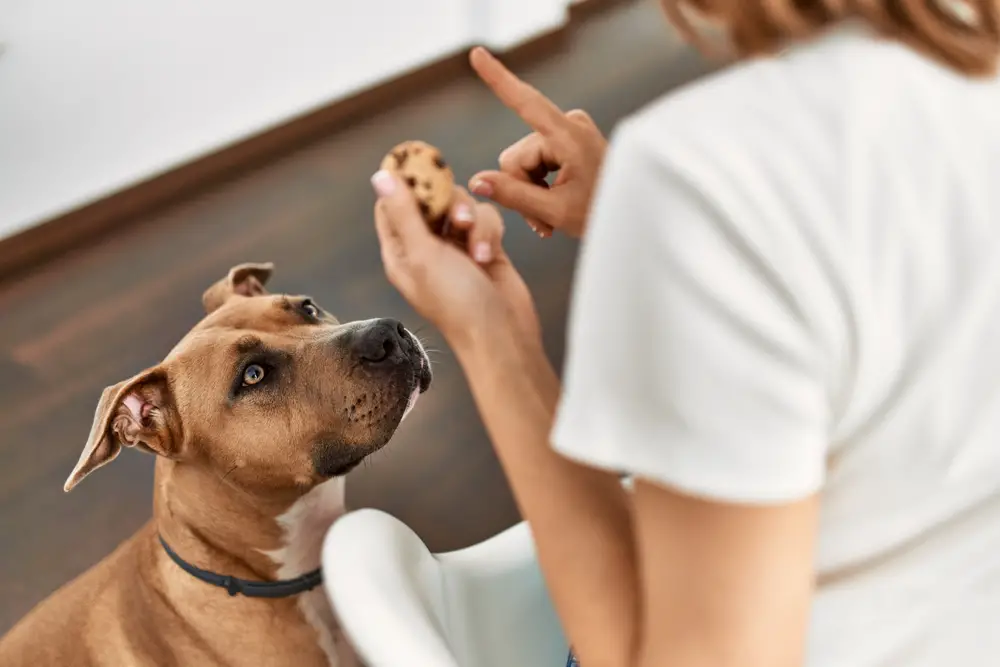1. Dogs Can’t Metabolize Theobromine, a Key Chemical in Chocolate

Ever wonder why chocolate is such a problem for dogs? The culprit is a chemical called *theobromine*, a cousin to caffeine. While humans process it fairly quickly, dogs’ systems are far slower, letting theobromine build up to toxic levels. Even a small amount can be dangerous, especially in smaller dogs. For them, a single bite can have serious consequences.
2. Symptoms of Chocolate Toxicity Aren’t Always Immediate

One of the scary things about chocolate toxicity is that symptoms don’t show up right away. It can take anywhere from 6 to 12 hours after ingestion for signs like vomiting, restlessness, panting, or even muscle tremors to appear. This delayed reaction means that you might not realize there’s an issue until things are already escalating, so quick action is crucial.
3. Dark Chocolate is the Worst Offender
Not all chocolate is created equal when it comes to toxicity in dogs. Dark chocolate and baking chocolate have far higher concentrations of theobromine than milk chocolate or white chocolate. That means just a small piece of dark chocolate could be as dangerous as an entire chocolate bar made of milk chocolate. If your dog has eaten dark or baking chocolate, it’s a red alert!
4. What To Do Immediately If Your Dog Eats Chocolate
So your dog found the hidden chocolate stash—don’t panic, but do act fast. First, try to estimate how much they ate and what type of chocolate it was. Call your vet or an animal poison control hotline right away. If you know they ate it within the last two hours, your vet may even recommend inducing vomiting (under guidance, of course) to get the chocolate out of their system.
5. Small Dogs Are at Higher Risk
The smaller the dog, the bigger the risk. Because toxic doses of theobromine are based on weight, even a small amount of chocolate can be very serious for small dogs like Chihuahuas, Pomeranians, or Dachshunds. For larger dogs, it still poses a risk, but they may be able to handle slightly more without reaching toxic levels.
6. Look Out for These Serious Symptoms
If your dog has eaten chocolate, watch closely for certain signs that they may be in distress. Vomiting, diarrhea, and restlessness are common early symptoms. As toxicity progresses, you might notice rapid breathing, muscle tremors, or seizures. In severe cases, chocolate toxicity can lead to coma or even death, especially without timely treatment.
7. Quick Math: How Much is Too Much?

Knowing how much chocolate is toxic can be tricky, but a rough guideline is about 20 mg of theobromine per kilogram of body weight. Dark chocolate has around 160 mg per ounce, so it doesn’t take much to reach dangerous levels. If your dog has eaten any amount of chocolate, it’s worth consulting your vet for advice tailored to their size and breed.
8. Why Chocolate Cravings Can Be Dangerous for Pets and People
Here’s an odd fact: dogs love chocolate just as much as humans do! But since even small amounts are dangerous for them, keeping chocolate completely out of reach is essential. They don’t understand the risks, so they’ll happily gobble it up if they get the chance.
9. Prevention is Key: How to Keep Chocolate Out of Reach
Dogs are resourceful when it comes to snacks, so make sure chocolate is stored in places they can’t reach. That means high cabinets, secured pantry doors, and not leaving chocolates on counters or in purses they can access. You can even teach your dog commands to “leave it” if they get curious about something you drop.
10. Why Some Dogs Handle Chocolate Better Than Others (But Still Don’t Risk It!)
Just like people, dogs have unique metabolisms. Some may process theobromine slightly better, while others are extra sensitive. But there’s no safe dose of chocolate, and even if a dog shows no immediate symptoms, it doesn’t mean they’re in the clear.
11. White Chocolate Isn’t as Dangerous, But It’s Not Safe Either
White chocolate has much lower levels of theobromine compared to dark or milk chocolate, but it still contains enough fat and sugar to cause issues for your dog. Eating too much white chocolate can lead to upset stomachs, pancreatitis, and other digestive issues, so it’s best to keep it out of reach as well.
12. Chocolate Can Affect Your Dog’s Heart and Nervous System
Theobromine affects dogs in several ways, with the heart and nervous system being particularly vulnerable. Once ingested, it increases the heart rate, potentially leading to arrhythmias (irregular heartbeats) and high blood pressure. Meanwhile, the stimulation of the nervous system can lead to tremors, restlessness, and even seizures, making it a full-body risk.
13. There’s a Chocolate Toxicity Calculator for Dogs
If your dog eats chocolate and you’re in a panic, some websites offer chocolate toxicity calculators for dogs. By entering your dog’s weight, the type of chocolate, and how much they ate, you can get a rough estimate of how dangerous the situation might be. While this shouldn’t replace a vet’s advice, it can help you understand if immediate action is needed while you’re waiting to speak with a professional.


